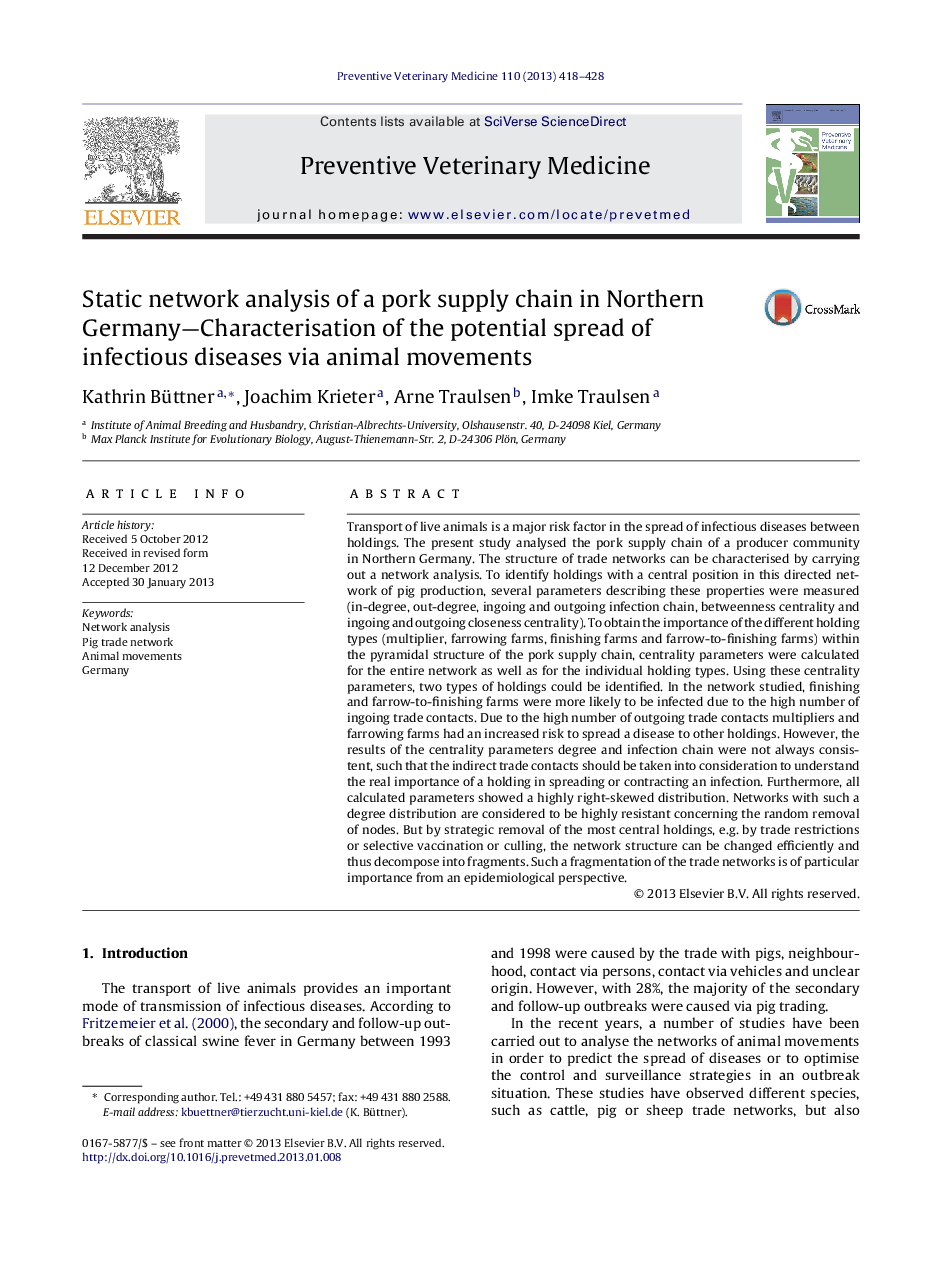| کد مقاله | کد نشریه | سال انتشار | مقاله انگلیسی | نسخه تمام متن |
|---|---|---|---|---|
| 5793801 | 1554182 | 2013 | 11 صفحه PDF | دانلود رایگان |

Transport of live animals is a major risk factor in the spread of infectious diseases between holdings. The present study analysed the pork supply chain of a producer community in Northern Germany. The structure of trade networks can be characterised by carrying out a network analysis. To identify holdings with a central position in this directed network of pig production, several parameters describing these properties were measured (in-degree, out-degree, ingoing and outgoing infection chain, betweenness centrality and ingoing and outgoing closeness centrality). To obtain the importance of the different holding types (multiplier, farrowing farms, finishing farms and farrow-to-finishing farms) within the pyramidal structure of the pork supply chain, centrality parameters were calculated for the entire network as well as for the individual holding types. Using these centrality parameters, two types of holdings could be identified. In the network studied, finishing and farrow-to-finishing farms were more likely to be infected due to the high number of ingoing trade contacts. Due to the high number of outgoing trade contacts multipliers and farrowing farms had an increased risk to spread a disease to other holdings. However, the results of the centrality parameters degree and infection chain were not always consistent, such that the indirect trade contacts should be taken into consideration to understand the real importance of a holding in spreading or contracting an infection. Furthermore, all calculated parameters showed a highly right-skewed distribution. Networks with such a degree distribution are considered to be highly resistant concerning the random removal of nodes. But by strategic removal of the most central holdings, e.g. by trade restrictions or selective vaccination or culling, the network structure can be changed efficiently and thus decompose into fragments. Such a fragmentation of the trade networks is of particular importance from an epidemiological perspective.
Journal: Preventive Veterinary Medicine - Volume 110, Issues 3â4, 1 July 2013, Pages 418-428